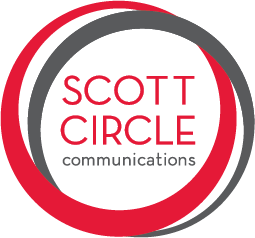Four Ways to Garner Attention (That Aren’t Traditional Media Coverage)
When communicators want to spread a message, one of the first tactics that always comes to mind is to secure media coverage. A feature story on your organization or an interview with someone on your leadership team is a great way to expand your exposure to a greater audience while also gaining credibility through a third party. Sometimes, however, you may be faced with an extremely challenging newscycle, where the media is unable to focus on anything other than what they consider “breaking news” (these days, it seems like it’s all COVID-19 or November elections 24/7).
When you’ve hit a wall with media coverage, remember that there are plenty of other tactics you can use to garner attention and raise awareness around your issues. Keep your ultimate goal in mind: is it to fundraise, recruit members, or activate people around advocacy issues? Strategic communications is more than just media relations. Here are some ways that mission-driven organizations can adapt, move beyond media, and still accomplish their goals.
Activate Your Existing Audience
Your members, partners and stakeholders are the ones who are most invested in your mission. You already know they care about your issues, so make sure you are communicating regularly with them - and activating them when needed. Consider utilizing your various channels such as your blog, newsletter, and social media to get them aware of an initiative or issue. Send them an action alert or give them the resources they need to bring a cause to light. Tools and templates such as a script to use when calling their local representatives, a guide for writing a letter to the editor or oped to their local paper, or even social media toolkits are ways you can make it easier for your audience to help spread YOUR message.
Join the Conversation Online
Is your organization working to advocate for a cause that is already being talked about by many people? Join the conversation that’s happening online, making sure that you’re utilizing any existing hashtags. Make your voice heard, but be sure you’re adding additional value. Make sure you’re not just speaking into a void, but that you’re actually engaging with others - responding to threads and tagging relevant people - these are all ways to build your audience. If you have the resources available, consider filming a short video of your own expert providing commentary on an issue or creating a branded infographic that makes a topic easy to understand. These visuals tend to prompt lots of engagement and are frequently shared, giving you an opportunity to be seen and heard by those already engaging in a conversation. As people see your messaging, they may become more aware of your organization and begin following and engaging with you on their own.
Leverage Your Partners
Nonprofits, associations, and other mission-driven organizations often work with like-minded partners who may share a common goal. See if these partners have channels you could tap into that could help expose your organization to a broader audience while also bringing a perspective they may not have. Are they hosting a virtual event where someone from your team could be a panelist? Does their organization have a blog where you could contribute some guest content? Can you return the favor and highlight some of their efforts on your channels? It pays to pay it forward. These types of cross promotional efforts help everyone, bringing new voices to light, while also serving as a way to spread a message to an audience you may not have originally reached.
Be a Resource
Just because your organization isn’t featured in a media placement, doesn’t mean you can’t still influence the conversation. Share your expertise and establish yourself as a resource by sharing your messaging in other ways. For example, pull together key talking points, links to research or legislation, as well as relevant news stories - anything that makes a case for why your particular issue is relevant. Share these resources with audiences who might be invested or who may be having conversations around these issues. Consider reaching out to the communications teams of like-minded groups, columnists at newspapers, producers of cable news shows, or even talking heads who may be making regular media appearances. These people may take your messaging and use it in their own communications efforts. Even if your organization isn’t mentioned by name, you are still bringing awareness to an issue - which is still a win! Down the line, you may begin to get recognized as an organization well-versed in certain issues - and if you’re lucky, someone that the media can call upon when they need an expert resource! Dee Donavanik (@donavanik) is a vice president at Scott Circle Communications (@scottcircle), a Washington, D.C. based public relations firm working with mission-driven clients.
This post was originally published in the October edition of the PRSA Association Nonprofit Section Newsletter
